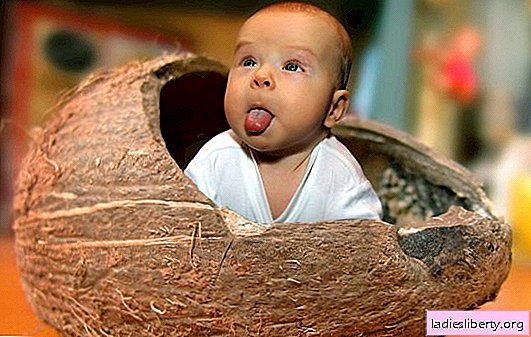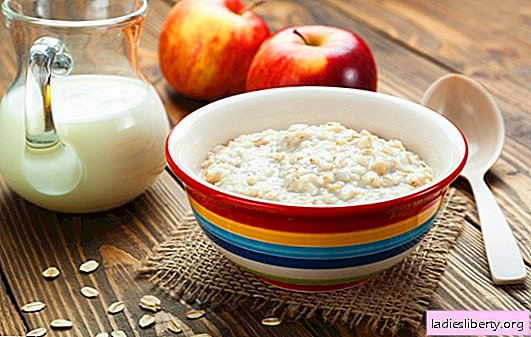
Two apple trees in a summer cottage are an occasion for reflection on what to do with the crop.
Twenty or thirty kilograms of apples are enough for jam, jams and juice to provide a family of four with apple blanks for the autumn-winter season.
What to do with the rest of the apples? Variety "White filling" gives, on average, 70-100 kg of apples per season, "Antonovka" - up to 150 kg.
At the same time, the shelf life of apple jam and juice is small, but the wine of good quality the older - the better. Apples are not grapes, but among fruit crops, their biochemical composition is considered one of the best materials for winemaking. If you have your own wine stock, apple wine is a good way to process the crop. This does not require special equipment - just a few large bottles of water complete with water locks. In extreme cases, you can do with ordinary medical gloves. Well, and of course, it is necessary to arm yourself with the knowledge of the basics of home fruit winemaking.
Wine from apples without spin - the basic technological principles
Good home-made wine must first be thought out, and you must start by evaluating the fruit material. Among the many varieties of apples, some have a sweet taste, others have a sour taste, and others have a slightly tart taste (wild varieties). These nuances are important for the preparation of a bouquet of future wine, the further order of work depends on them. Proper preparation of the taste of wine begins at the stage of collecting and sorting the fruit. Wine from one variety of apples most often loses in taste to wines in which several varieties are used for cooking.
To make wort from sour apples requires the addition of water to neutralize the acid. Water must also be added to increase the volume of apple wort with a lower juice content. But, juice diluted with water will not give a good, rich taste and aroma to wine. What can be done in this case? When preparing fruits for the preparation of wort (or pulp), select several varieties of apples that meet the following criteria:
Sugar content - in sweet apples there is a more intense aroma;
Acid content - too acidic varieties, with an acidity level above 1.4%, negatively affect the fermentation process, and from sour wort, instead of wine, vinegar can be obtained. The norm of the acid is 0.8%.
Juiciness - it is clear that the amount of future wine depends on the amount of natural juice. Juiciness, to some extent, depends on the degree of maturity, and it, in turn, affects the content of sugar and acid. It turns out a vicious circle. True, there are varieties that have a denser and less succulent pulp. It is for such fruits that the method of obtaining juice by preliminary fermentation is the best option.
Taste of taste - although this quality is least characteristic of apples, in winter and wild varieties the tart taste is still present. A characteristic astringent taste indicates the presence in the fruits of tannin - a substance that is necessary for clarifying wine, increasing its shelf life and durability.
All stages of the preparation of apple wine consist of:
• collection and sorting of fruits,
• obtaining juice or wine material,
• making wort,
• its fermentation,
• direct fermentation,
• removal from sediment, clarification and tanization,
• aging, overfilling and subsequent care during storage.
The most time-consuming process, many consider getting juice. On the one hand, squeezing juice does not present any difficulties with a press and a juicer. But if there is no electricity in the country for objective reasons, then the press and the juicer will not help, and in this case, making wine from apples without pressing, from the pulp is the only way out. To do this, the collected and sorted fruits are cut, after which they are placed in a large container and sprinkled with sugar. That is, instead of juice, pulp is prepared, as is the case with berry wine stock, from which it is difficult to squeeze juice. This method of obtaining apple juice is advantageous, because in the process of making wine completely all the fruit material is used.
It should be noted that after collecting apples, they do not need to be washed. On the surface of the fruit live "wild yeast", which will begin the process of making wine. But it is advisable to pick apples in dry and sunny weather, so that the fruit does not have dew drops or rain. If apples are collected from the ground, then they must be wiped with a dry rag.
For faster juice removal, the apples are chopped finely, at the same time removing the core with the bones, cutting out the lesions from the fetus (rot, scab, wormholes). After slicing, pieces of fruit are sprinkled with sugar and left for fermentation - at this stage the yeast located on the surface of the fruit begins to work, accelerating the separation of juice, without which it will still not be possible to start making wine. Otherwise, you have to add water to the pulp, that is, dilute the natural juice, which, of course, will worsen the quality of the future wine.
When the pulp becomes loose, soft, and it is easy to give in to kneading and compaction, it must be transferred to a bottle, add the right amount of sugar. Mix sugar until completely dissolved. Install a water lock and place the bottle where there is no direct sunlight, drafts, and the constant natural temperature of the air during the entire period of fermentation will be 18-23 ° C. Fill the bottle by ¾ of the volume, leaving free space for the foam, which will rise on the surface in the phase of the most active fermentation - in the first 7-10 days.
The next phase of fermentation is more moderate. At this time, foam forms less on the surface of the bottle, with smaller bubbles, and inside the bottle it becomes noticeable how the solid particles of the fruits begin to gradually separate from the fermented juice. After about a month, the base begins to settle at the bottom of the bottle and a quiet phase of fermentation begins, after which the wine yeast, having completed its work, will gradually settle to the bottom, on the surface of the grounds remaining in the bottle with wort. Yeast, which has converted sugar into alcohol and carbon dioxide, will already lack oxygen, nutrition, and they will begin to gradually die. At this time, the wine must be poured so that the bitterness resulting from the decay of the fungi is not transmitted to future wine. It is important not to miss this moment to remove the thick from the bottle, along with dying fungi. Of course, squeezing the pulp is much easier than juice from fresh apples, but this somewhat slows down the fermentation of wine.
Pour wine through a gauze filter. Prepare a clean and dry bucket, place a filter on it and pour the contents of the bottle. The residue remaining in the gauze can be squeezed into a bucket, but only if the gauze is folded in several layers to prevent solid particles from seeping through it. Further, the bottle must be thoroughly washed, dried and the future wine returned to it. At this point, it is advisable to add sugar if it is planned to prepare a strong or dessert wine, since for such varieties of wines sugar should be introduced in parts. In addition, the addition of sugar again activates the fermentation, which may be caused by the removal of the pulp. In case of stopping the fermentation of the wort there is always a risk of infecting it with acetic bacteria.
Now come to the question of sugar and wine yeast. This topic is very voluminous, and we can talk about the role of sugar in the life of yeast for a very long time. Therefore, we remember only the most important theses.
Yeast - living microorganisms, therefore, behave accordingly, although not consciously, obeying instincts. When they settle in favorable conditions, where there is food, air, they have enough energy and temperature - comfortable, microorganisms begin to multiply. Like all living things on the planet, yeast needs to create conditions for healthy competition. That is, if sugar is in excess for a certain number of microorganisms, then they will behave very sluggishly - why rush if enough for everyone? If you pour out all the sugar at once, then the yeast will lazily doze off, and alcohol will not begin to form soon.
The strength of wine depends on the amount of sugar and the rate of its application depends on the desired strength of the wine. We add 20 g to the sugar contained in the fruit juice to increase the strength by one degree. For example, for wine with a strength of 18%, you need to add 180 g of sugar for every liter of wort. That is, for 10 liters of wort it is necessary to pour 1.8 kg. We divide this amount into 2-3 parts so that the yeast works better. You need to add sugar as the fermentation process slows down, after about 7-10 days. The fermentation rate will depend on the temperature regime.
The critical temperature at which yeast slows down is 14 ° C. If the wort, by chance, cools to this temperature, then you can still fix the situation - just the wine will wander for longer. It will not be possible to save the wine if the temperature drops to 8 ° C. In the same way, the process slows down when the temperature rises. Just 2 ° C above 23 ° C significantly reduces the activity of the yeast, and at higher values the yeast dies.
About yeast. For wine, it is better to buy special wine yeast, or use the prepared yeast: pour 200 g of raisins with warm water (0.5-0.7 l), and leave it warm for 3-5 days. A sourdough jar needs to be tied with a double layer of gauze to ensure air access and, at the same time, block access to foreign bacteria. For the preparation of yeast, you can use raspberries and strawberries, last year's jam. Do not use baker's yeast.
Good news: for apple wine, yeast can be omitted, because to start fermentation it is most often enough those that live on the surface of the fruit. Of course, if the pulp stands still, does not bubble, and the wine material does not exude a characteristic odor, then the introduction of yeast, nevertheless, is necessary.
After precipitation to the bottom of the sediment and in the absence of visible bubbles of carbon dioxide in the bottle, fermentation can be considered completed. Young wine needs to be poured again to remove solid suspensions. At the same time, after removal from the sediment, tanization is performed. Tannic acid is added to the young wine to improve its quality. After tanning, the wine is poured again, if necessary, sweetened and the bottle is put into a cool room for ripening, during which care and observation of young wine continues.
Good quality apple wine can be obtained 3.5-4 months after stopping fermentation.
1. Dry wine from apples without spin
Composition:
Apples, sour (forest or scavenger) 6.3 kg
Sugar 1.15 kg
Cooking Technology:
The fruits are picked and prepared by cutting into small cubes or thin slices, removing damaged parts, stalks and core. After they are poured with sugar and left in a non-oxidizing bowl for agitation. A bucket is covered with a towel. After the appearance of a characteristic acidic odor, the pulp is crushed with a blender or mashed to a puree mass.
The pulp is transferred to a clean bottle (10 l). The bottle is set for fermentation at 18-23 ° C. A rubber medical glove with a pierced finger is put on the neck. In the process of fermentation, it is inflated, and the signal about the end of fermentation will be its deflated or, even, neck drawn inward form.
After that, the wine is removed from the sediment. Insert the hose into the neck, lowering its end 2 cm above the ground, and insert the other end into a clean bowl. Transfer the wine by creating a vacuum in the hose.
Wash and dry the bottle (utensils for storing wine should be sterile). Pour wine into a bottle, and transfer it to a cool room. After two weeks, repeat the transfusion. Pour the wine into bottles and cork them.
2. Apple wine without juice - cider
Composition:
Apples
- sour 2 kg
- sweet 8 kg
- tart 2 kg
Sugar 2.3 kg
Cooking:
The preparation of fruits and the entire process of preparing wine until the last removal from the sediment are identical to the technology of recipe No. 1. Before bottling wine, add 10% sugar of the total volume and dissolve it. Pour cider into bottles from under champagne without adding 7-8 cm to the edge of the neck. Bottles are tightly corked and fasten the corks with wire or twine. Store at a temperature not exceeding 14 ° C, in a horizontal position.
3. Strong table wine from apples without spin
Composition:
Sweet and sour apples (good, garden variety) 12.5 kg
Sugar 2.2 kg
Order of preparation:
The preparation of raw materials and pulp exactly coincides with the description of recipe No. 1, until the first removal from the precipitate, but at the same time half of the sugar taken is initially introduced. After filtering the wort, after 21 - 30 days from the beginning of fermentation, the second part of sugar is introduced, the wine is poured into the bottle, sealed, and fermentation continues until the precipitate is completely stopped and precipitated. Then again the process repeats: clarification, aging and overfilling, bottling and storage.
4. Strong blending wine from apples without juice
Composition:
Sweet apples 13 kg
Sugar 750 g
Tannic acid 1.5 g
Tartar 1.0 g
Semi-sweet pear wine 0.7 L
Operating procedure:
Preparation of wine material is carried out in full accordance with previous recipes. Then, the fermented pulp with sugar and tartar is placed in a bottle and closed with a water lock. After fermentation and filtration, the thickened wine is clarified by adding diluted tannic acid. Again removed from the sediment, pouring into a clean container, and blended with pear wine. After mixing the apple and pear wine, the bottle is moved to a cool place for storage. If necessary, re-removal from the sediment and overfilling of wine. After 3 months, the wine is poured into prepared containers.
5. Dessert wine from apples without pressing
Composition:
Apple pulp 11.5 kg
Sugar 2.3 kg
Tannin 1.2 g
Tartaric acid 5 g
Order of preparation:
Fermented pulp, in which 800 g of sugar and tartar have already been added, are transferred to a prepared bottle (15 l). The rest of the sugar is introduced in the process of fermentation in equal parts: after removing the grounds (after 3 weeks), and another 10 days. After fermentation, the wine is removed from the sediment, and a solution of tannin is introduced. After waiting for clarification, the wine is again removed from the sediment and poured. After 2 months, the wine is sweetened if necessary, aged for another 1-1.5 months and bottled.
6. Liqueur wine made from apples without juice
Composition:
Ripe sweet apples 9 kg
Sugar 5.6 kg
Tartar 8 g
Acid tanning 2.5 g
Cooking:
Half of the required amount of sugar is added to the finished young wine after clarification with tannin. Sugar is dissolved in a small volume of heated wine and added to the total mass, in the form of syrup. Liqueur wine is mixed and aged in a bottle until a bouquet is formed, for at least 60 days, after which it is bottled and sealed.
Wine made from apples without juice - useful tips and tricks
The average sugar content of apples is about 10%, that is, about 1 g of apple pulp accounts for about 100 g of fruit sugar. Use this indicator to get wine from apples without pressing the desired strength.
The greatest amount of tannin is found in apples of winter varieties and in forest (wild) fruits.
From scavenger and unripe apples you will get a sour wine with a rough taste, but dry and table wines are suitable for culinary purposes - for sauces, marinades.
Acidic varieties of apples contain up to 2%. Such acidity is not suitable for making wort, and in order not to add water, use a mixture of sour and sweet apples in a ratio of 1: 2.
If there is a lack of tannin in apples, add oak leaves or bark to the pulp (20 g per liter of wort).











